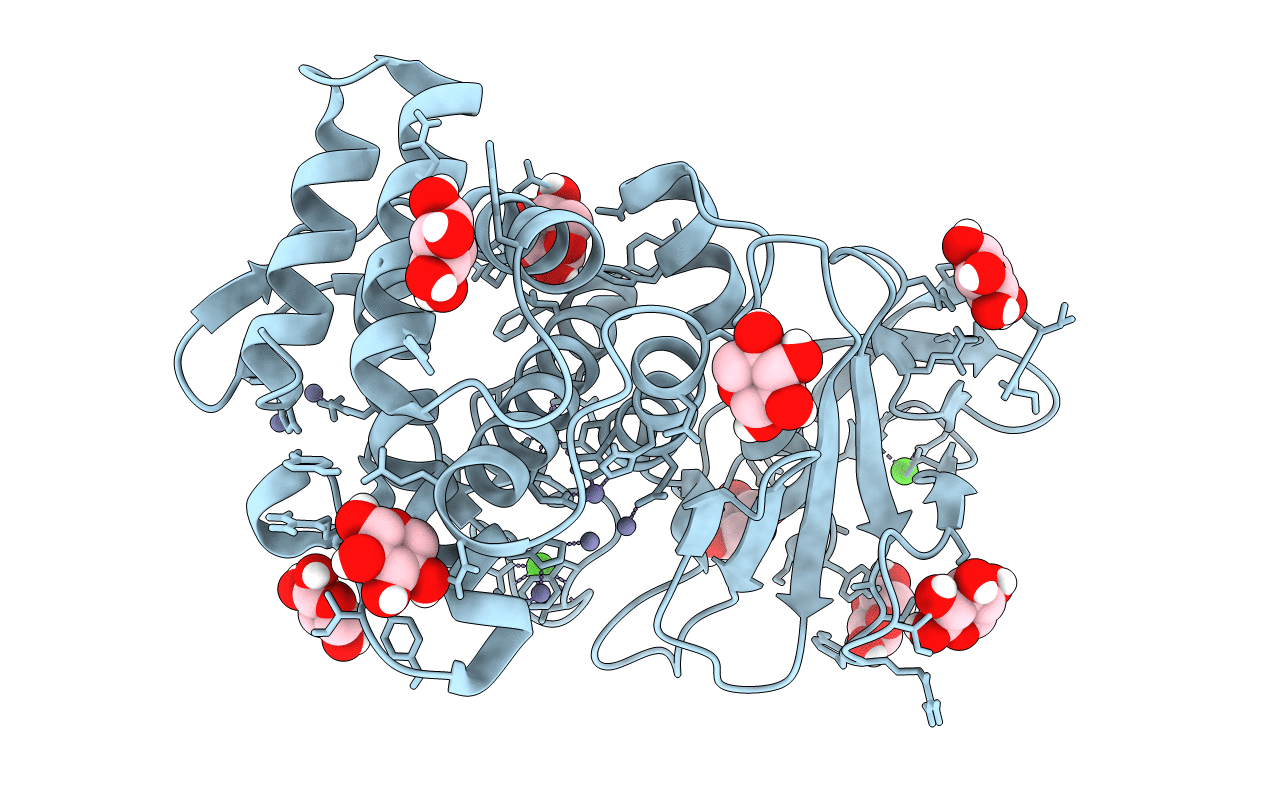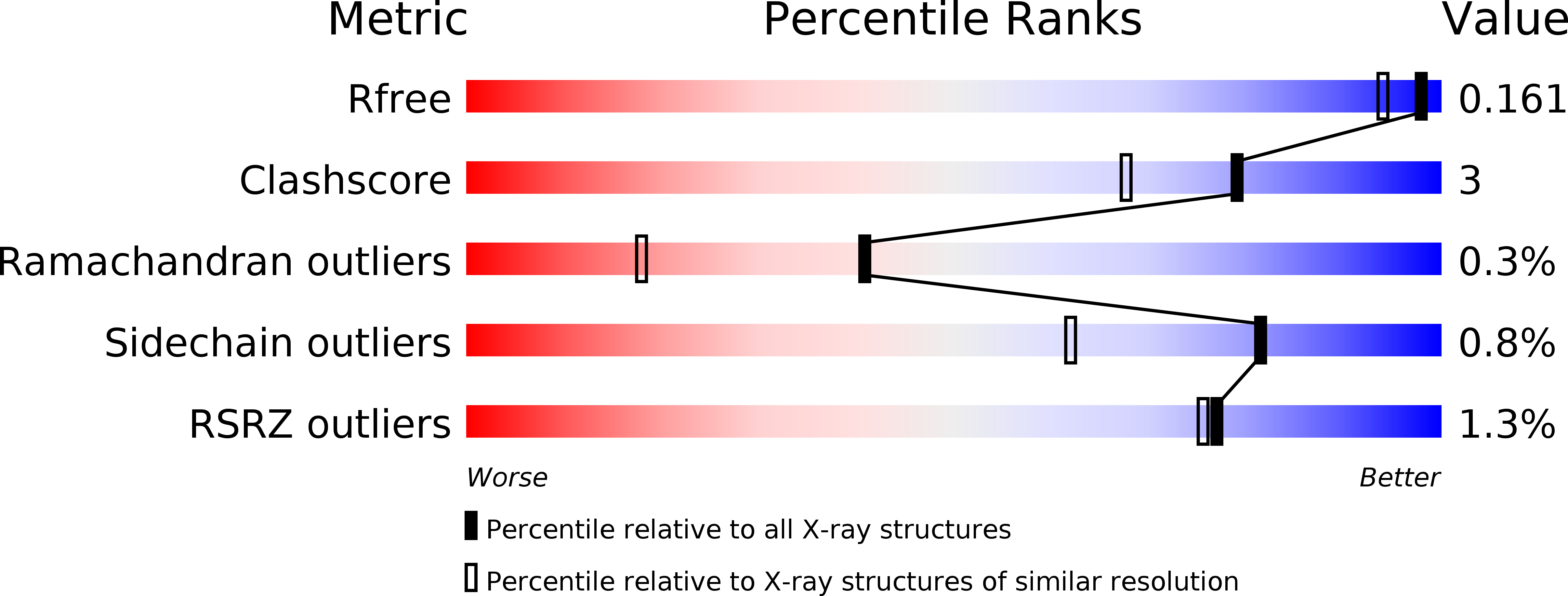
Deposition Date
2018-11-20
Release Date
2019-10-02
Last Version Date
2024-03-13
Entry Detail
PDB ID:
6N4Z
Keywords:
Title:
Tetragonal thermolysin (with 50% xylose) plunge cooled in liquid nitrogen to 77 K
Biological Source:
Source Organism:
Bacillus thermoproteolyticus (Taxon ID: 1427)
Host Organism:
Method Details:
Experimental Method:
Resolution:
1.40 Å
R-Value Free:
0.16
R-Value Work:
0.13
R-Value Observed:
0.14
Space Group:
P 41 21 2


